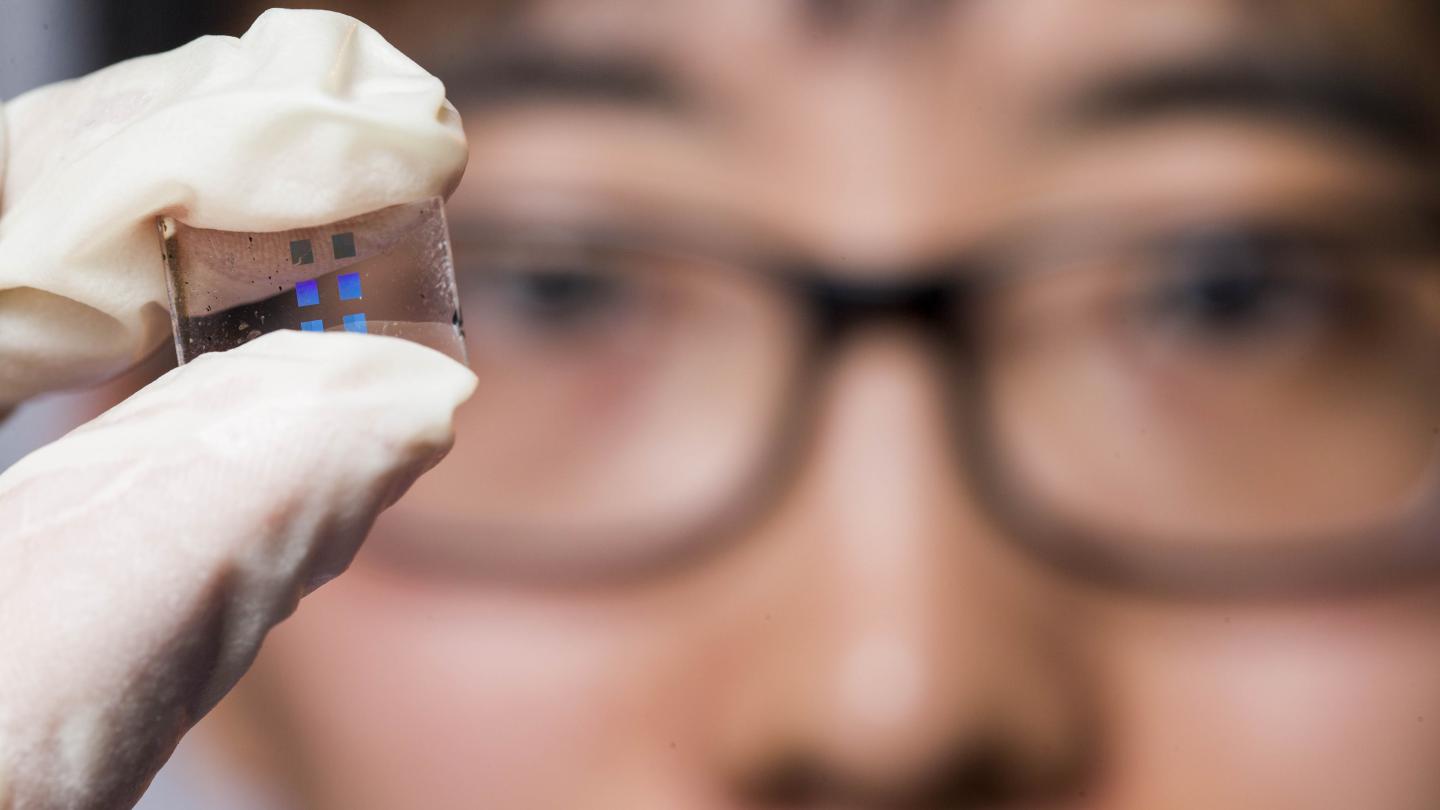The team believes that the lens, which is 100 times thinner than a human hair, could enable the efficient detection and transmission of information encoded in quantum light, once quantum technology is fully realized.
 Kai Wang holding a sample that has multiple metasurface camera lenses. Courtesy of Lannon Harley, ANU.
The team demonstrated that its lens could image multiple projections of quantum states simultaneously with a single metasurface, thus enabling a robust reconstruction of multiphoton polarization-encoded states. One- and two-photon states were reconstructed through nonlocal photon correlation measurements with polarization-insensitive click detectors positioned after the metasurface. The scalability to higher photon numbers was established theoretically.
Kai Wang holding a sample that has multiple metasurface camera lenses. Courtesy of Lannon Harley, ANU.
The team demonstrated that its lens could image multiple projections of quantum states simultaneously with a single metasurface, thus enabling a robust reconstruction of multiphoton polarization-encoded states. One- and two-photon states were reconstructed through nonlocal photon correlation measurements with polarization-insensitive click detectors positioned after the metasurface. The scalability to higher photon numbers was established theoretically.
“It is the first of its kind to image several quantum particles of light at once, enabling the observation of their spooky behavior with ultrasensitive cameras,” said professor Andrey Sukhorukov.
Researcher Kai Wang said that one challenge was making a device for portable quantum technologies.
“Our device offers a compact, integrated and stable solution for manipulating quantum light,” he said. “It is fabricated with a similar kind of manufacturing technique used by Intel and NVIDIA for computer chips.”
The work shows that nonclassical multiphoton interferences can be achieved at the subwavelength scale in all-dielectric metasurfaces, and that it may be feasible to use ultrathin quantum metadevices to manipulate and measure multiphoton quantum states. The device could have applications in free-space quantum imaging and in quantum communications.
The research was published in Science (doi:10.1126/science.aat8196).

